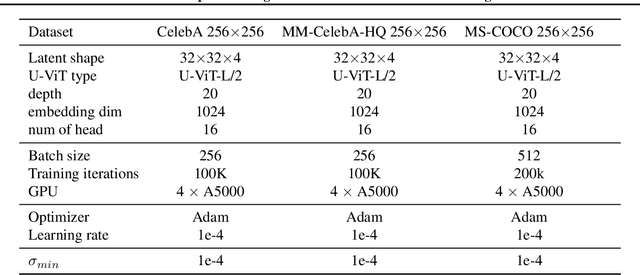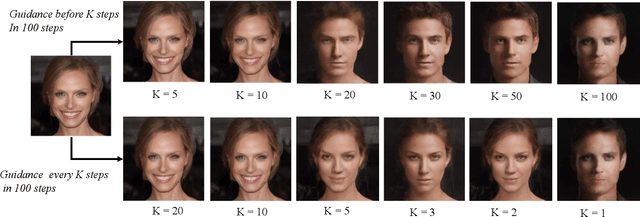David W Zhang
Latent Space Editing in Transformer-Based Flow Matching
Dec 17, 2023



Abstract:This paper strives for image editing via generative models. Flow Matching is an emerging generative modeling technique that offers the advantage of simple and efficient training. Simultaneously, a new transformer-based U-ViT has recently been proposed to replace the commonly used UNet for better scalability and performance in generative modeling. Hence, Flow Matching with a transformer backbone offers the potential for scalable and high-quality generative modeling, but their latent structure and editing ability are as of yet unknown. Hence, we adopt this setting and explore how to edit images through latent space manipulation. We introduce an editing space, which we call $u$-space, that can be manipulated in a controllable, accumulative, and composable manner. Additionally, we propose a tailored sampling solution to enable sampling with the more efficient adaptive step-size ODE solvers. Lastly, we put forth a straightforward yet powerful method for achieving fine-grained and nuanced editing using text prompts. Our framework is simple and efficient, all while being highly effective at editing images while preserving the essence of the original content. Our code will be publicly available at https://taohu.me/lfm/
Self-Guided Diffusion Models
Oct 12, 2022



Abstract:Diffusion models have demonstrated remarkable progress in image generation quality, especially when guidance is used to control the generative process. However, guidance requires a large amount of image-annotation pairs for training and is thus dependent on their availability, correctness and unbiasedness. In this paper, we eliminate the need for such annotation by instead leveraging the flexibility of self-supervision signals to design a framework for self-guided diffusion models. By leveraging a feature extraction function and a self-annotation function, our method provides guidance signals at various image granularities: from the level of holistic images to object boxes and even segmentation masks. Our experiments on single-label and multi-label image datasets demonstrate that self-labeled guidance always outperforms diffusion models without guidance and may even surpass guidance based on ground-truth labels, especially on unbalanced data. When equipped with self-supervised box or mask proposals, our method further generates visually diverse yet semantically consistent images, without the need for any class, box, or segment label annotation. Self-guided diffusion is simple, flexible and expected to profit from deployment at scale.
 Add to Chrome
Add to Chrome Add to Firefox
Add to Firefox Add to Edge
Add to Edge